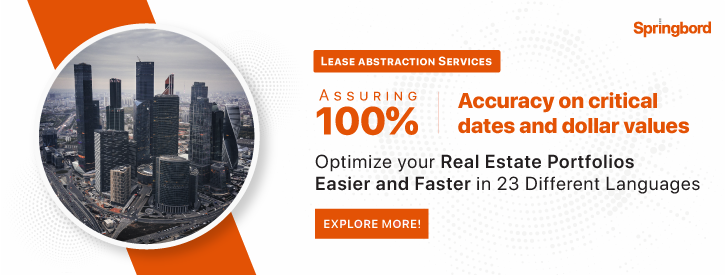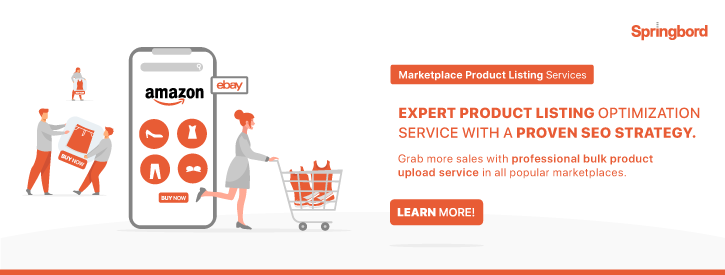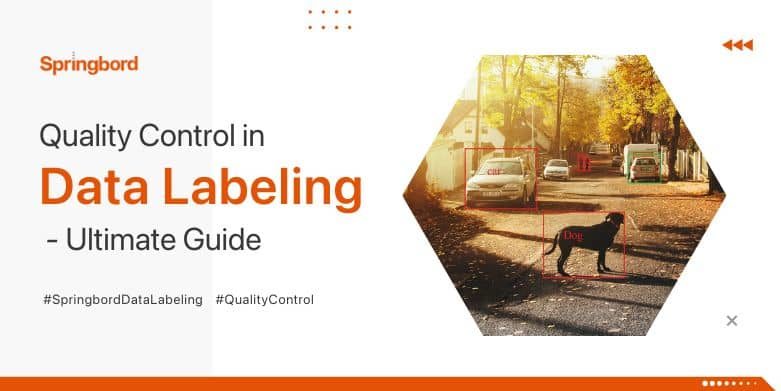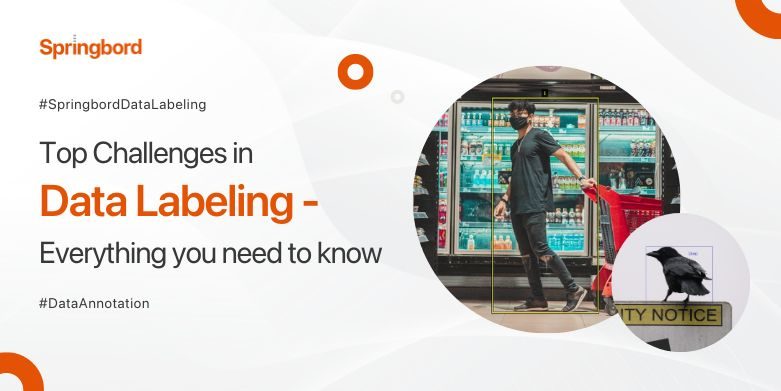 Read time 9 min
Read time 9 minIn today’s data-driven society, the precise annotation of auditory data is essential to the success of numerous industries.
Audio annotation, the process of labeling audio recordings with pertinent information, facilitates the development of innovative technologies such as speech recognition, natural language processing, and voice assistants.
Selecting the right data labeling service is essential to ensure annotated audio data’s quality and dependability. This article examines the significance of audio annotation in 2023 and emphasizes the importance of selecting a reputable and right data labeling service provider.
What is Audio Annotation?
Audio annotation is assigning relevant labels or metadata to audio data. Listening to and analyzing audio recordings such that specific features can be isolated and labeled.
Speech transcription, speaker identification, emotion labeling, keyword tagging, audio segmentation, and content classification are all examples of annotated tasks. The purpose is to enrich the audio data with additional context for various situations.
Services involved (provided) for audio annotation:
Speech-to-Text Transcription (Audio Transcription): The service converts spoken audio into written text.
Named Entity Recognition (NER): This technique recognizes and extracts certain named entities from audio data.
Sentiment Analysis: This service analyses an audio clip to detect the emotional tone or sentiment communicated.
Speaker Diarization: Process of segmenting an audio recording and assigning the speech to distinct speakers.
Emotion Recognition: This service analyses audio to detect and identify the speaker’s emotions.
Audio Classification: It classifies audio data based on established criteria into distinct classes or categories.
Noise Detection and Removal: This service detects and removes undesirable background noise or audio interference
Types of audio data that can be annotated
Different types of audio data can be annotated in different ways to glean useful information.
Some common types of audio data that undergo annotation include:
- Speech recordings: Conversations, presentations, lectures, phone conversations, and audio ripped from videos are all examples of speech recordings.
- Ambient audio: Ambient sound is any recording made in a natural or artificial environment, such as a restaurant, a park, or a workplace.
- Voice commands: The third type of user input is voice instructions, audio data people provide using voice assistants or speech recognition software.
- Music: Adding tags to songs to describe the music’s style, performer, tempo, and emotional state.
- Sound effects: Annotation of sounds used in movies, video games, or virtual reality experiences.
Techniques and tools used for audio annotation:
Several techniques and tools are utilized in the process of audio annotation to achieve accurate and consistent results:
- Manual annotation: First, there’s manual annotation, in which real people listen to the audio and make notes based on an established set of criteria.
- Automatic annotation: Machine learning methods or pre-trained models extract features or information from the audio.
- Speech recognition systems: Thirdly, speech recognition systems use speech-to-text technologies to transcribe spoken exchanges and provide contextual information to the written word.
- Audio segmentation: Audio segmentation cuts up large audio files into smaller pieces that may be annotated and analyzed separately.
- Annotation tools: Annotation tools, also known as “waveform visualizers,” “annotation overlays,” and “collaboration features,” are five types of software or platforms used for annotating audio.
Challenges associated with audio annotation:
Audio annotation presents various challenges that need to be addressed for accurate and reliable results:
Subjectivity: First, subjective interpretation between annotators is possible, which could lead to inconsistent labeling.
Noise and audio quality: Two factors that can hinder precise annotation of required features are noise and audio quality.
Speaker identification: It might be difficult to separate voices in overlapping talks with multiple speakers in a recording.
Time-consuming process: Annotating audio can be laborious because it requires close attention to detail while listening to and analyzing recordings.
Successful audio annotation projects require overcoming these hurdles and using proper approaches and tools to enable the extraction of useful insights and the development of cutting-edge audio-based apps.
Applications of Audio Annotation
Audio annotation, coupled with the right data labeling service, plays a crucial role in various domains and industries, enabling the development and advancement of cutting-edge technologies.
Speech Recognition and Transcription
One of the most popular uses of audio annotation is in the field of voice recognition and transcription. With the help of a good data labeling service, audio data can be labeled with precise transcriptions of spoken words or phrases.
This annotated data is the foundation for developing automated speech recognition (ASR) systems and transcription models. By employing audio annotation, researchers and developers can increase the accuracy and performance of speech recognition systems, enabling them to translate spoken words into written text more precisely.
This technology finds applications in numerous industries, such as customer service, transcription services, voice-controlled gadgets, etc.
Voice Assistants and Chatbots:
The development of voice assistants and chatbots has revolutionized how we engage with technology. Audio annotation is vital in educating these intelligent systems to perceive and respond to human speech.
By deploying the correct data labeling provider, audio data may be labeled with different intents, entities, and commands, enabling voice assistants and chatbots to interpret and reply to user requests accurately.
This annotation process helps improve these systems’ natural language understanding (NLU) capabilities, making them more successful in generating relevant and context-aware responses. As voice assistants and chatbots become increasingly pervasive daily, correct audio annotation cannot be emphasized.
Audio-based Sentiment Analysis:
Audio sentiment analysis analyzes a text or speech to ascertain the underlying emotional tone or sentiment.
Audio annotation plays a crucial part in audio-based sentiment analysis by providing labels or annotations that indicate distinct emotional states, such as positive, negative, and neutral, or specific emotions like happiness, sadness, rage, and more.
By leveraging the correct data labeling service, researchers and developers can automatically design sentiment analysis models to assess and interpret the sentiment in audio recordings.
This application finds utility in market research, social media analysis, customer feedback analysis, and voice-based emotion identification systems.
Acoustic Scene Analysis:
Acoustic scene analysis involves analyzing and categorizing environmental noises in an audio recording. It allows machines to recognize individual sounds and interpret their context.
With the correct data labeling service, audio annotation can label audio data with information about the many sound sources in a scene, such as human speech, musical instruments, footfalls, sirens, and more.
By adding such annotations to audio data, researchers and developers can better equip acoustic scene analysis systems to recognize and categorize sounds in their natural settings. This innovation can be used in various contexts, including surveillance, smart homes, noise pollution monitoring, and augmented reality with audio.
Audio Event Detection and Classification:
Audio event detection and classification involve identifying and categorizing specific sound events or activities in an audio recording. It makes it possible for machines to identify and react to predetermined tones.
The correct data labeling service can support audio annotation, which is useful for annotating audio data with labels indicating various sound events or activities.
Researchers and developers can use annotated data to train models to recognize and classify these occurrences in real time. This allows for a wide range of uses in home security, audio surveillance, content moderation, and interactive audio-based apps.
Importance of Accurate Audio Annotation in 2023
Accurate audio annotation has become a crucial part of many industries by 2023, paving the way for improvements in machine learning, better user experiences in voice-based applications, data-driven decisions, and the creation of cutting-edge audio-based technologies.
Accurate audio annotation is crucial because it sets the stage for extracting maximum value from audio data.
Improved accuracy and performance of machine learning models:
Training machine learning models for speech recognition, audio classification, and sound event detection rely heavily on accurate audio annotation.
Teaching models can increase prediction accuracy to recognize and distinguish between various audio signals using accurate annotations applied to the training data. Annotations of high-quality help machine learning algorithms recognize patterns, extract useful information, and create more precise predictions.
Enhanced user experience in voice-based applications:
Virtual assistants, voice-controlled gadgets, and IVRs (interactive voice response systems) are only a few examples of the rise of voice-based applications. Accurate audio annotation guarantees that programs can comprehend and respond to user requests, questions, and subtleties in speech.
Annotations help voice-based apps provide more precise responses, better understand user intent, and create a more seamless, natural, and enjoyable experience overall. Accurate audio annotation helps provide a smooth user experience by facilitating tasks such as voice command transcription and emotion analysis.
Facilitation of data-driven decision-making:
Audio data is precious in market research, customer service, and media analysis. An organization can gain valuable insights and act on them through accurate audio annotation.
Companies can analyze trends, recognize patterns, and acquire a deeper knowledge of customers’ preferences and behaviors by annotating audio data with relevant information such as speaker identification, topic labeling, or sentiment analysis.
Decisions can then be made based on hard evidence, which boosts efficiency and ultimately benefits the bottom line.
Development of innovative audio-based technologies:
Recent advances in precise audio annotation have boosted the development of cutting-edge audio-based technology. Researchers and developers can push the boundaries of fields like voice synthesis, audio scene interpretation, and music recommendation systems with the help of accurate annotations.
Accurate audio annotation is the foundation for training and improving these technologies, leading to improved performance and new user experiences. Accurate annotation paves the way for innovations like customized voice synthesis, event detection in real-time audio, and more immersive listening experiences.
Choosing the Right Data Labelling Service
Choosing the right data labeling service is a critical decision that can significantly impact the success of audio annotation projects. With the increasing demand for accurate annotations in various industries, selecting a reliable data labeling service provider is essential to deliver high-quality results.
Criteria for selecting a reliable data labeling service provider:
- Experience and track record: Look for a service with experience and a good track record in audio annotation. Think about the quality they’ve produced in the past and their ability to stick to a tight schedule.
- Expert annotators: Make sure the company you work with to identify your data uses people well-versed in audio annotation. Accurate audio data labeling, comprehension of subtleties in voice and audio content, and consistent application of pertinent annotations are all abilities possessed by skilled annotators.
- Robust infrastructure and tools: Make sure the service provider uses cutting-edge technology and has a solid foundation for audio annotation. To guarantee effective and precise annotation procedures, it is necessary to have access to specialized software, hardware, and safe data storage methods.
- Customization and flexibility: Look for a data labeling service that allows you to tailor your service to the needs of your project. They need to be flexible to meet the specific requirements of the project at hand.
Importance of expertise and domain knowledge in the audio annotation:
Accurately labeling a wide variety of audio signals and content requires domain-specific knowledge and skills in audio annotation. If you need data labeling services, pick a company with experts on staff familiar with audio annotation.
They need to know their way around speech recognition software, language and acoustic models, and jargon unique to their field. Annotators with domain expertise are better able to give accurate and relevant annotations, improving the quality of machine learning models and the user’s overall experience.
Considerations for scalability and flexibility:
When choosing a data labeling service, scalability should be a top priority. They should be able to process massive amounts of audio data and quickly add more annotation specialists as required. Evaluate their ability to achieve project deadlines without sacrificing quality and whether they have a well-defined approach to handling growing workloads.
The requirements of a project may change as it progresses; thus, adaptability is also crucial. A flexible service provider who can respond to evolving requirements for annotation and manage growing projects is essential for effective teamwork and positive results.
Quality assurance and data privacy measures:
Data labeling places a premium on quality assurance. The service provider should employ stringent quality control procedures to guarantee precise annotations. Multiple reviews, tests for annotator agreement, and feedback loops ensure that annotations are consistent and accurate.
Privacy and security of personal information are also very important factors to consider. Verify the provider has adequate data privacy safeguards, such as secure data handling practices, confidentiality agreements, and adherence to any applicable rules for protecting sensitive audio data.
To Sum Up
In 2023, audio annotation will play a crucial role in numerous industries, facilitating the creation of precise and innovative technologies. Choosing the correct data labeling service is crucial for guaranteeing the quality and dependability of audio data that has been annotated.
Springbord stands out as a prominent provider of high-quality labeling services owing to its vast experience and expertise in the industry. With a concentration on customization and meeting each client’s unique requirements, Springbord provides customized data labeling solutions that enable businesses to uncover valuable customer insights and improve their decision-making processes.







